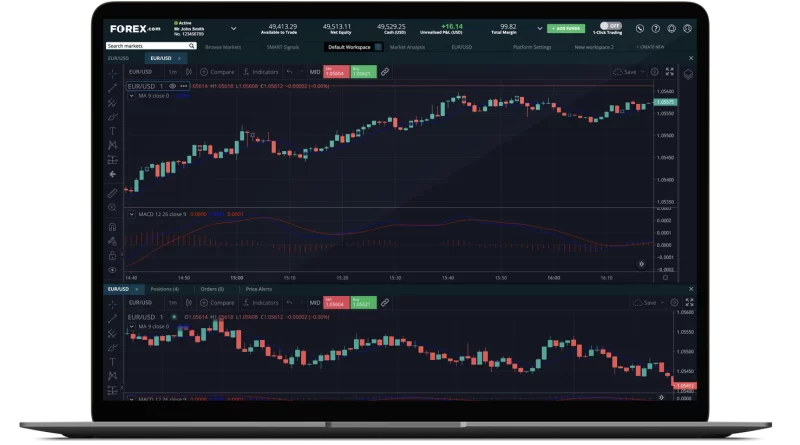How to Master Forex Risk Management – Advanced Techniques for 2024
A forex trading involves a great opportunity to get some more profit and even greater risks at the same time. In order to reduce the losses and increase the profit, effective management of risk can help a trader to significantly lower the loss while profit increase.
Market risk, as the term indicates, is the risk that the result of your trade will be less than what you thought, due to an adverse price move in a cross that you could be dealing in. One particularly advanced way of mitigating market risk is to use stop loss orders.
Identifying Trends
The foreign exchange (forex, FX) market is a worldwide decentralised over-the-counter marketplace for trading in currencies. This is where people can trade on current prices or buying and selling at set prices to engage in foreign trade and investment. The forex market, a widely known market for trading, offers traders many opportunities to trade in an exciting environment with good earnings possibilities. However, along with the market opportunities for traders, there are many risks involved in such transactions that need to be dealt with efficiently to make sure the investors and their investments are safe and profits are being received on a regular basis. With smart risk management, traders can reduce the risk in their transactions. Firstly, traders need to have a plan and stick to it, from their position size and risk traverses to the placement of their stop loss and take profit orders. Secondly, it is important to keep records; if traders make a mistake, they need to keep track of it and ensure that it does not happen again immediately.
Diversifying Your Portfolio
The proper way to diversify your portfolio is to choose e.g. stocks, funds and other assets for an investment. When you plan your strategy, keep your time horizon and risk attitude in mind to make a right investment. Diversification helps to reduce market volatility, and increase your chance of meeting your financial goals. You should diversify across asset classes (such as investing in real estate and stocks), not only into them (such as stocks of different sectors). Diversification should also occur within each given asset class. For example, instead of investing only in companies from a single sector (such as oil stocks), one should look into investing in companies operated in several sectors, reducing the overall sector risks (such as the oil’s price fluctuation). If you don’t want to decide which individual investments to pick, mutual funds and ETFs also diversify. Likewise, other alternative investment vehicles could be helpful diversifiers, such as precious metals or some long-positive health-oriented articles.
Using Hedging Strategies
To conduct trading in the market, traders should hedge the risk, in other words, try to minimize the risk by adjusting their operating strategies against the adverse market movements. Hedges are financial strategies where you go long and short at the same time to hedge yourself against a decline in value of the currency pair. You lose on both if you profit on either. Other than foreign exchange risk, hedging strategies can incur additional expenses through transaction costs and spreads, which makes it more difficult to capture exceptional gains as the hedges would prevent capturing favourable movements in the markets. In summary, before including hedging strategies in their trading strategy, investors should first understand how it can optimise potential gains when acting against it.
Managing Your Emotions
Mastering emotions is the key for forex traders to stay in the forex trading world for the long run. Our greed, fear, euphoria or panic may lead us to make hasty decisions, which could cause us to lack discipline, and thus achieve suboptimal trading results. The objective is to calm the emotions and gain Discipline and Patience to make decisions rationally when markets move – which, in turn, allows for performance benefit and profitability benefit by trading. Other strategies for coping with your emotions include avoiding news or forex screens, eating healthily, exercising, talking to fellow traders or with a trading psychology specialist, and keeping a journal to record trades with an analysis of the rationale behind the trade and how you felt when the trade first entered the market.
Using Stop Loss Orders
Every strategy, whether it’s for winning at poker or trading the financial markets, must incorporate strong risk-management principles. Proper risk management means isolating your losses during periods of bad card draws, losing streaks or unexpected bumps in volatility so that they remain the exceptions, not the disruptive norm. For example, stop loss orders act as a risk management tool as they automatically sell trades at a pre-defined price level. They safeguard traders from major losses due to financial crashes and panics when the market is vulnerable or volatile. Essentially, stop loss orders act as a safety net. You would be tripling your money! Don’t listen to the naysayers: once markets close for the week at 5pm on Friday, prices will hold steady until they open up again on Monday. Prices do change, but only with the opening bell on Monday morning. And the losses that your stop-losses would have forced, the gains that your profit levels would have forcefully taken off your account? Well, luckily those do not change either. They stay frozen until the markets open up on Monday morning, so you can still book as much profit and as little loss as you’d expected. Except, of course, when they don’t. Prices fluctuate throughout the weekend, just like during the rest of the week. And not infrequently, the best among them lead to gap-downs over the weekend, and gap-ups on Monday along with an immense loss on your account, entering the trap between your stop-loss and your profit level.




